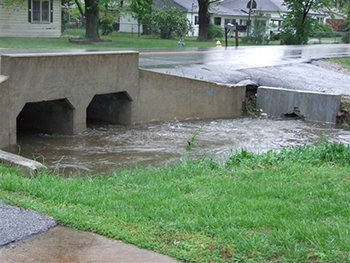Why is Stormwater an Issue?

Stormwater runoff carries pollutants like litter, nutrients, bacteria, chemicals, and sediment into storm drains, flowing untreated into creeks, streams, and lakes that we use for swimming, fishing, and drinking water.
Impacts from stormwater runoff pollution:
- Sediment clouds water, hindering aquatic plant growth and destroying habitats.
- Excess nutrients trigger algae blooms, depleting oxygen levels and harming aquatic life.
- Bacteria and pathogens in runoff create health risks in swimming areas.
- Litter can choke or harm aquatic life.
- Hazardous products like pesticides and motor oil poison aquatic ecosystems.
- Polluted runoff can contaminate drinking water.
As land is developed, impervious surfaces like roofs and roads increase stormwater runoff, worsening water quality in watersheds. Streams in areas with more than 10% impervious cover are likely to experience significant water quality issues.
Watch the video below to learn how stormwater runoff impacts water quality.
Publications
Arkansas Water Primer Series: Water Basics
Video Podcasts
Visit our Clean Water YouTube Channel to learn more about protecting our waterways.
Protecting Water Quality from Stormwater Runoff